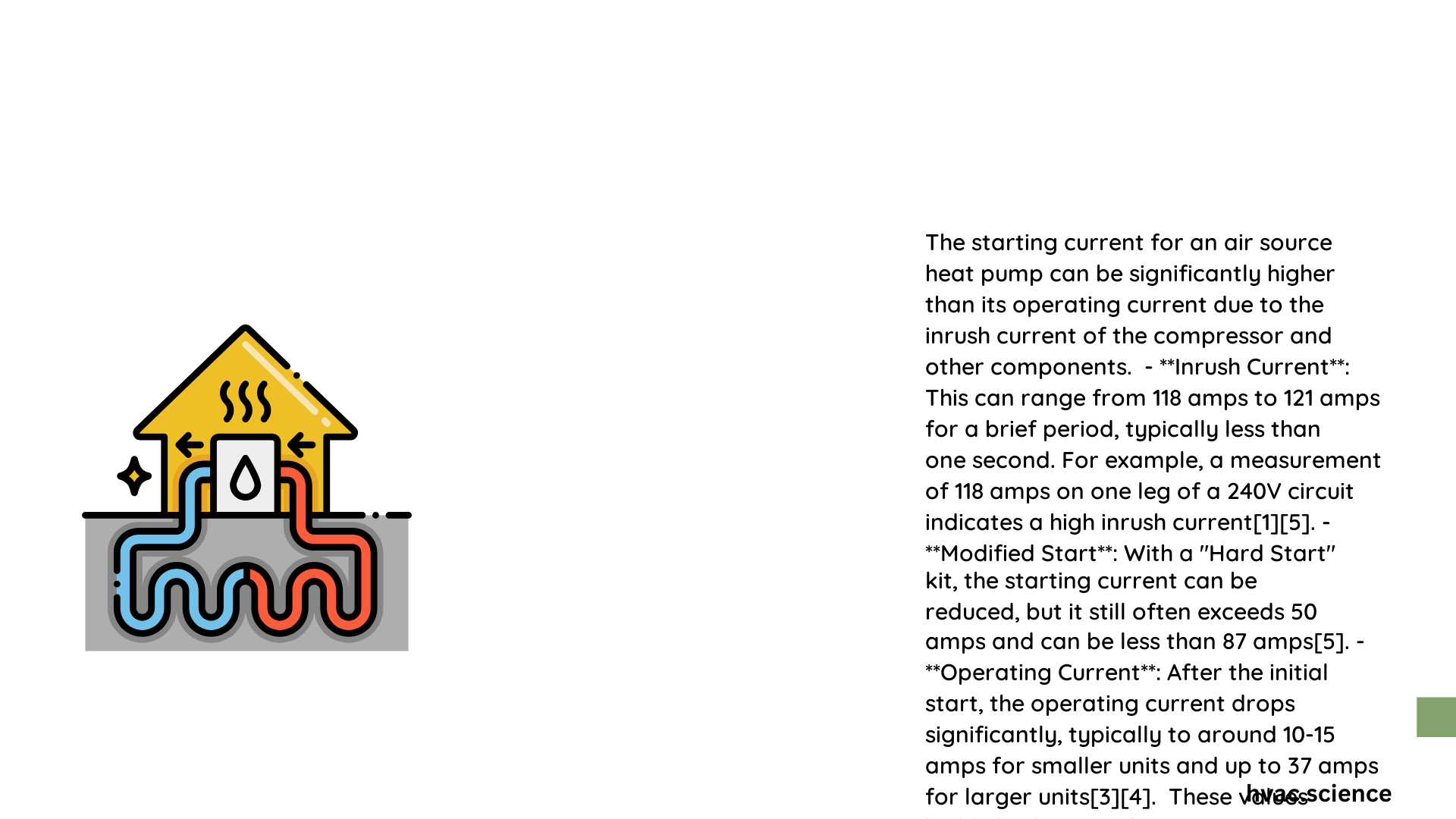Air source heat pumps represent complex electrical systems with unique startup characteristics, particularly regarding their initial current draw. Understanding the nuanced electrical requirements is crucial for homeowners and HVAC professionals, as starting current amps can significantly impact circuit design, breaker selection, and overall system performance. This comprehensive guide explores the intricate electrical dynamics of air source heat pump startup currents, providing detailed insights into amperage specifications, calculation methods, and critical considerations.
What Are Air Source Heat Pump Starting Current Amps?
Air source heat pump starting current amps represent the instantaneous electrical current drawn during the initial compressor startup phase. Unlike steady-state operation, this momentary current spike can be substantially higher than normal running currents, typically ranging from 100-120 amps for brief milliseconds.
How Do Starting Currents Differ from Running Currents?
| Current Type | Typical Amperage | Duration | Characteristics |
|---|---|---|---|
| Inrush Current | 118-121 amps | <1 second | Peak electrical draw |
| Running Current | 12-15 amps | Continuous | Steady operational load |
What Factors Influence Starting Current Amps?
Several critical factors impact air source heat pump starting current amps:
- Compressor Size
- Larger capacity units require more initial electrical surge
-
Typically correlates with system tonnage
-
Motor Type
- Scroll compressors exhibit different startup characteristics
-
Efficiency impacts initial current draw
-
Refrigerant Pressure
- Higher system pressures increase startup electrical requirements
- Ambient temperature affects refrigerant dynamics
How to Calculate Starting Current Amps?

Calculating air source heat pump starting current amps involves multiple variables:
- Voltage: Standard 240V circuits
- Power Factor: Typically 0.8-0.95
- Formula: ( I = \frac{P}{V \times PF} )
Practical Electrical Considerations
Circuit Breaker Requirements
- 1.5-ton Unit: 20-amp breaker
- 3-5 ton Unit: 30-60 amp breaker
- Wire Gauge Recommendations:
- Small units: 12-14 gauge
- Large units: 4-6 gauge
What Are Potential Electrical Risks?
Improper electrical configuration can lead to:
– Circuit overload
– Premature component failure
– Reduced system efficiency
– Potential safety hazards
Professional Recommendations
- Always consult certified HVAC electricians
- Verify manufacturer specifications
- Conduct professional electrical load assessment
- Use appropriate circuit protection
Technical Insights for Professionals
Advanced practitioners should consider:
– Measuring actual inrush current with specialized meters
– Analyzing compressor lock rotor amps (LRA)
– Evaluating power quality during startup
Emerging Technologies
Modern heat pumps increasingly incorporate:
– Soft start technologies
– Advanced motor controllers
– Reduced inrush current mechanisms
Conclusion
Understanding air source heat pump starting current amps requires comprehensive electrical knowledge, precise measurement techniques, and careful system design. Professionals and homeowners must collaborate to ensure safe, efficient heat pump installations.
Key Takeaways
- Starting currents can exceed 100 amps momentarily
- Proper electrical design is critical
- Professional assessment ensures optimal performance
Reference:
– Smokstak Forum
– Hickory Heating & Cooling
– DIY Solar Forum
